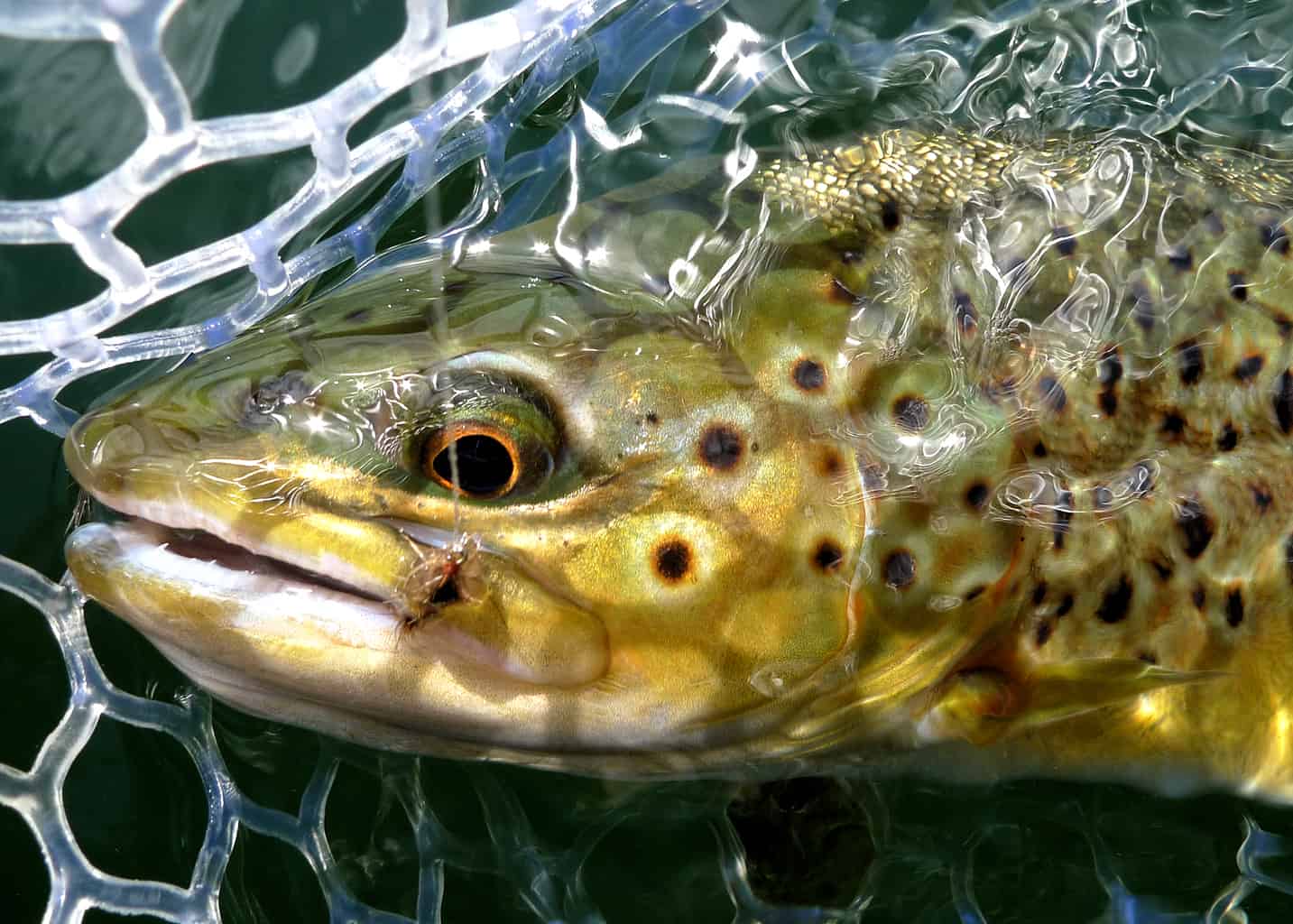In plain sight, at the western end of Washington’s Skagit County, lies Pass Lake – a fly fishing-only trout lake that’s been a sought-after destination for nearly a century.
Pass Lake’s rich fishing history legend grew substantially in 1939, when it became the first lake in Washington to be strictly limited to fly fishing.
It’s also strictly catch-and-release for trout, which enables more of its trout to reach trophy proportions.
It’s been consistent through the years, and remains one of the best fly fishing lakes in the state today, even though it’s an easy drive for most Puget Sound anglers.
Filled with plentiful rainbow trout and trophy-sized brown trout, Pass Lake offers excitement even for the most seasoned of fly fishermen.
The fishing conditions on the lake can be fickle, though, and it’s important to be prepared before you head out.
Trout Fishing
Though the lake was historically stocked with a wide variety of fish, including cutthroat trout and Atlantic salmon, the main attractions on Pass Lake today are rainbow and brown trout, both of which are planted in the lake these days.
There also are a smaller number of resident coastal cutthroat trout, caught less frequently.
There are some little green sunfish here as well, which will hit flies, and non-trout species like sunfish may be kept at Pass Lake but certainly aren’t what brings fly anglers here.
Both main species of trout can grow to be more than 20 inches long in Pass Lake, with a rare fish closer to 30 inches, but the brown trout are the predominant trophy fish in the lake.
It’s quite common, on a normal day, to catch dozens of rainbows in the 13 to 16 inch range and a couple of browns surpassing 20 inches.
This doesn’t mean there aren’t exceptions to the rule, though – plenty of big rainbows lurk in the depths of the lake, and they (along with the browns) can be tempted to the surface by the occasional midge hatch.
Most of the fishing at Pass Lake, though, happens below the surface.
Trout are less hesitant to eat chironomid patterns below the surface before the insects emerge as midges, and a wide variety of chironomid nymphs – preferably with beadheads – will get the job done nicely.
Fishing leech patterns are another staple technique at Pass Lake, particularly if you’re looking to catch some of the bigger trout in the lake. Fish your leeches on a sinking line (type IV is usually a go-to at Pass), and try stripping them in at varying speeds.
As the sun starts setting and evening takes its hold on the lake, the trout will begin to get a little less cautious.
This is a great time to try some more unconventional tactics, like stripping streamers close to the surface or fishing dry flies when you’d normally stick to nymphing.
Particularly in the summer, the evenings on Pass Lake can be magical.
When to Fish
The lake is open year-round, but there are certainly better times of year than others.
Particularly, winter is a time to avoid Pass Lake – and most other lakes in the Pacific Northwest, for that matter – as colder temperatures cause trout to get sluggish.
Though you can still catch the odd trout or two in the winter on the lake, as it doesn’t get quite cold enough to freeze over in this coastal region, you’d have better luck focusing your efforts towards the other three seasons.
Spring Fly Fishing
Spring brings some of the best fly fishing of the year to the lake, as fish reawaken hungry from the winter doldrums and start to eat again. Chironomid nymphs make up the bulk of the fishing, but you’ll see some occasional emergers on the surface as well.
Don’t be afraid to fish a streamer later in the spring as fish become more aggressive – it can be a great way to catch some of the bigger trout in the lake.
Summer Fly Fishing
During the dog days of summer, water temperatures on the lake can get up into the lower 70s, making the lake difficult to fish during the heat of the day.
The water temperature is coolest in the early mornings, but late evenings can also make for productive fishing on the lake in the summer.
Keep an eye on the water temperatures before you head out in the summer. If Washington is in the middle of a heat wave, it might be best to focus your fishing on the early morning and late evening hours.
Fall Fly Fishing
As is typical everywhere during the fall, trout begin a feeding frenzy in preparation for winter.
The fall is a great time to catch trout in Pass Lake on every technique imaginable – nymphing, fishing leeches, fishing emergers, it all works.
You’ll see some of the biggest fish from the lake be caught during the fall, and it truly is a great time of year to get out fishing.
Location and Access
Pass Lake is on Fidalgo Island, located just north of Deception Pass and the north end of Whidbey Island, and just south of Anacortes. It’s right along Highway 20 near Deception Pass State Park.
It’s a gorgeous area, and is just over an hour from Seattle. If you’re in Bellingham, it’s just a 40-minute jaunt to the southwest.
Pass Lake is, without a doubt, best fished from a boat or pontoon. No motors are allowed, though.
If you’re in the mood for some pure fly fishing with the chance for trophy trout, you’d be remiss not to check out Pass Lake.
It’s fairly close to Seattle and Bellingham, making it a great destination for the avid angler.
Washington Resources
WDFW Fishing and Stocking Reports
WDFW Fishing Regulations
National Weather Service forecasts
Carter Reschke is a freelance writer based in Oregon. Passionate about the outdoors, Carter is a fly fishing aficionado and spends his days on the river when he’s not writing.

